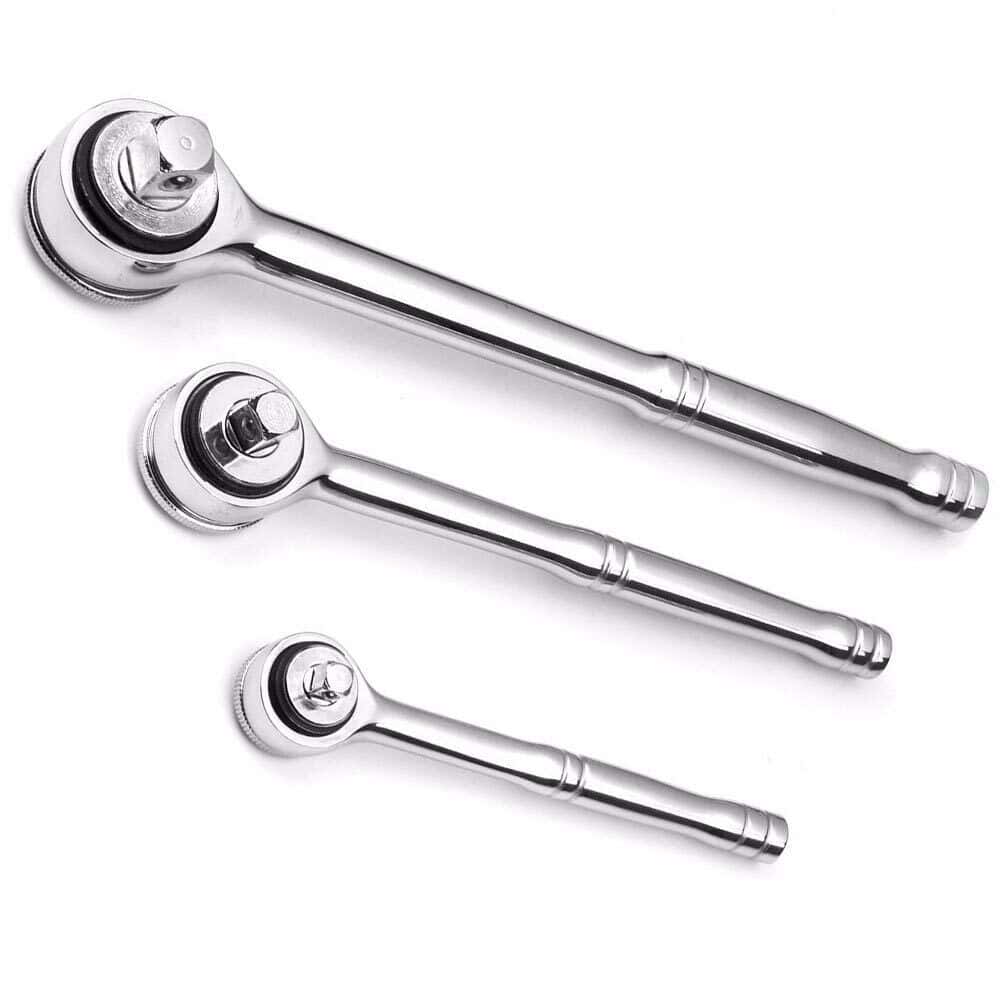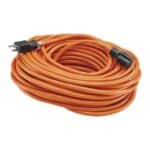A socket wrench is a useful tool for tightening or loosening nuts and bolts. It has a handle and different sockets that fit different sizes. The sockets fit over the nuts or bolt heads to turn them. The socket wrench, or ratchet, is a crucial tool for anyone working with nuts and bolts. Its unique ratcheting mechanism makes it easy to use in tight spaces and speeds up the process of tightening or loosening fasteners.
In this guide, we’ll cover everything you need to know about socket wrenches, from choosing the right type and sockets to proper usage and maintenance tips, ensuring you can tackle any fastening task with confidence and efficiency. Socket wrenches make it easy to work in tight spaces, and the handle reduces the effort needed to turn the socket. Many have a ratchet that allows you to turn in one direction without removing the socket from the fastener. Socket wrenches come in different sizes for small or big jobs.
The drive size indicates how big the part is that connects the socket to the handle. Common sizes are 1/4 inch, 3/8 inch, and 1/2 inch. Larger drives work better for bigger nuts and bolts.

Master the Socket Wrench: Your Go-To Tool for Fastening
Understanding the Socket Wrench
The socket wrench, also known as a ratchet, is a versatile tool used for tightening or loosening nuts and bolts. It consists of a handle with a ratcheting mechanism and a square drive at one end to attach various sockets. The ratcheting mechanism allows the handle to rotate freely in one direction while engaging the socket in the other, making it easier to work in tight spaces without removing the wrench after each turn.
Choosing the Right Socket Wrench
- Drive Size: The drive size (1/4″, 3/8″, or 1/2″) determines the size of sockets that can be used with the wrench. 3/8″ is the most common size for general use.
- Ratchet Type: Most socket wrenches have a pear-shaped head with a reversible ratcheting mechanism. Other types include flex-head, T-handle, and breaker bars.
- Material and Quality: Opt for a wrench made from durable materials like chrome vanadium steel. A quality wrench will last longer and provide better performance.
Types of Sockets
- Standard (SAE) and Metric: Sockets come in both SAE (inches) and metric (millimeters) sizes. Ensure you choose the correct type for your fasteners.
- Deep vs. Shallow: Deep sockets are useful for reaching nuts and bolts that are recessed or extended. Shallow sockets are suitable for most standard applications.
- 6-Point vs. 12-Point: 6-point sockets provide a more secure grip on fasteners, especially rounded or damaged ones. 12-point sockets offer easier access at various angles.
How to Use a Socket Wrench
- Select the Correct Socket: Match the socket size to the nut or bolt you’re working on.
- Attach the Socket: Push the socket onto the square drive until it clicks into place.
- Set the Direction: Flip the lever on the back of the ratchet to the left for tightening or to the right for loosening.
- Position the Socket: Place the socket over the fastener and ensure it’s fully seated.
- Turn the Handle: Turn the handle clockwise to tighten or counterclockwise to loosen. The ratcheting mechanism will allow you to turn the handle without lifting it off the fastener after each turn.
- Remove the Socket: Press the release button on the back of the ratchet to detach the socket.
Safety Tips
- Use the Correct Size: Using an incorrect socket size can damage the fastener or the socket itself.
- Apply Steady Pressure: Avoid excessive force, especially when loosening stuck fasteners. Use penetrating oil or a breaker bar if necessary.
- Wear Safety Glasses: Protect your eyes from flying debris.
- Keep the Work Area Clean: A clean work area reduces the risk of accidents.
Maintenance
- Clean Regularly: Wipe down the wrench and sockets after use to remove dirt and grime.
- Lubricate the Ratchet: Occasionally lubricate the ratchet mechanism with a light oil to ensure smooth operation.
- Store Properly: Store your socket wrench set in a toolbox or organizer to protect it from damage and keep the sockets organized.
Design and Mechanics of Socket Wrenches
Socket wrenches are handy tools for tightening and loosening nuts and bolts. They have special parts that make them easy to use. These wrenches come in many sizes to fit different jobs.
Components and Functionality
A socket wrench has three main parts:
- Ratchet handle
- Square drive
- Socket
The ratchet handle lets you turn nuts without taking the wrench off. It has a switch to change direction. The square drive connects the handle to the socket. Sockets come in many sizes to fit different nuts.
Socket wrenches use a ratcheting system. This system has small teeth inside that grip when you turn one way. They slip when you turn the other way. This helps you work faster.
The lever on the ratchet changes the turning direction. You can tighten or loosen nuts by flipping this switch.
Socket Wrench Varieties and Sizes
Socket wrenches come in different types:
- Standard sockets
- Deep sockets
- Impact sockets
- Hex bit sockets
Each type is for a specific job. Hex bit sockets work with Allen wrenches. They’re good for building furniture.
Socket sizes range from small to large. Common sizes are:
- 1/4 inch
- 3/8 inch
- 1/2 inch
These sizes refer to the square drive. Bigger drives can handle more torque. This makes them better for tough jobs.
Socket sets often include many socket sizes. This lets you work on lots of different nuts and bolts. Some sets have special sockets for spark plugs or other unique tasks.
Applications and Usage
Socket wrenches are handy tools for many jobs. They make it easy to tighten or loosen nuts and bolts. These tools work well in tight spaces and can handle tough tasks.
Practical Uses in Tightening and Loosening
Socket wrenches are great for tightening and loosening bolts and nuts. They work on cars, bikes and home appliances. Mechanics use them to fix engines and change tires. The ratchet lets users work fast in tight spots.
Socket wrenches come with many attachments. This makes them useful for different size nuts and bolts. They can reach places other tools can’t. This saves time and effort on big jobs.
People often use socket wrenches to:
- Change car tires
- Fix bikes
- Put together furniture
- Work on plumbing
Types of Repairs and DIY Projects
DIY fans love socket wrenches. These tools help with many home projects. They’re good for fixing things around the house.
Some common uses include:
- Building shelves
- Fixing leaky faucets
- Assembling playground equipment
- Repairing lawn mowers
Mechanics use socket wrenches for car repairs. The tools help them work on engines brakes and more. Socket wrenches are also useful for fixing bikes and motorcycles.
In factories workers use these tools to fix machines. They’re great for working in tight spaces. Socket wrenches help keep equipment running smoothly.
Selecting the Right Wrench for the Job
Picking the right socket wrench is key. Users should match the tool to the task. Size and drive type matter most.
Common socket wrench sizes:
- 1/4 inch: small jobs
- 3/8 inch: medium tasks
- 1/2 inch: heavy-duty work
Different socket types fit different fasteners. Hex sockets work on most nuts and bolts. Star-shaped Torx sockets are for special screws.
For tough jobs impact wrenches offer more power. Torque wrenches help tighten bolts to exact specs. Extension bars reach into deep spots.
Choosing the right wrench makes work easier and safer. It helps prevent damage to nuts and bolts.
Frequently Asked Questions
Socket wrenches come in different types. Each type has its own uses. Let’s look at some common questions about socket wrenches.
What are the applications of a hinged socket wrench in automotive repair?
A hinged socket wrench is great for tight spots in cars. It can reach nuts and bolts in small spaces. This tool is handy for working on engines and brake systems.
How does a T-handle socket wrench differ from other wrench types?
T-handle socket wrenches have a T-shaped grip. This shape gives more turning power. They are good for tasks that need extra force like loosening stuck bolts.
In what scenarios is an L-handle socket wrench preferred?
L-handle socket wrenches work well in narrow areas. They can fit where other wrenches can’t. These tools are useful for jobs under a car or in an engine bay.
What advantages does a socket wrench offer over other types of wrenches?
Socket wrenches are more flexible than fixed wrenches. They can work with many bolt sizes. Socket wrenches also give better grip and leverage. This makes turning nuts and bolts easier.
For what purposes can a ratchet wrench be used in place of a hinged socket wrench?
Ratchet wrenches are good for quick work. They let you turn bolts without taking the wrench off. This saves time on jobs with many bolts. Ratchets work well for simple repairs and assembly tasks.
When is it appropriate to use a breaker bar instead of a standard socket wrench?
Breaker bars are for very tight bolts. They give more leverage than standard socket wrenches. Use a breaker bar when a normal wrench can’t loosen a stuck bolt. This tool is often used on car lug nuts or rusty bolts.







